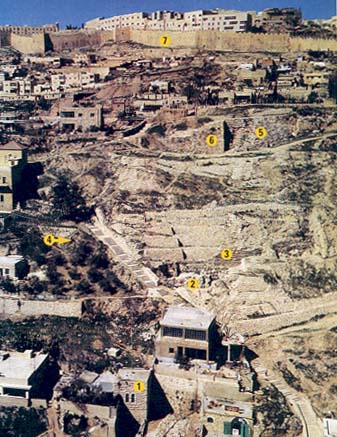Image Details

Zev Radovan
A modern springhouse (1) covers the entrance to the Gihon Spring. Located at the foot of the eastern slope of the City of David, the spring lies outside the ancient city walls, marked 2 (built in the Middle Bronze Age II [18th to 17th century B.C.E.]) and 3 (dating from the late Iron Age). Inside the walls is the gabled entrance (4) to the Warren’s Shaft System, an underground system carved to provide access to the spring’s water from inside the city.
Higher on the hill appear the remains of the Stepped-Stone Structure (5), which is only partially exposed in this photo, taken after Kathleen Kenyon’s excavations in the 1960s. The date and function of the Stepped-Stone Structure are debated; it may have served as a terracing or fortification system of the Canaanite-Jebusite city. The nearby Hellenistic and Roman period remains (6) probably follow the line of the wall built by the exiles when they returned from Babylonia in the fifth century B.C.E. The medieval wall (7) at the top of the hill encloses the Old City of Jerusalem today.
